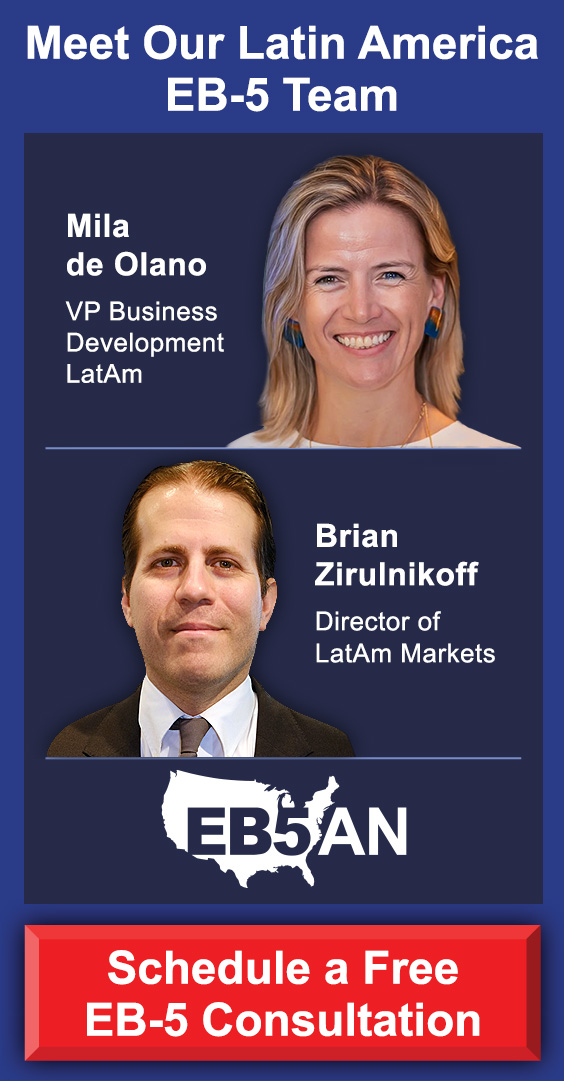For Indian tech professionals, landing a role at Google on an H‑1B visa often feels like hitting the jackpot due to the brand, the salary, and the potential stay in the U.S. permanently. Over the last decade, while many Indian IT service firms have dialed back H‑1B reliance, Big Tech has stepped in to fill that gap.
In recent years, the H-1B path has become less certain. Unpredictable layoffs, long Green Card backlogs, and shifting immigration policies have highlighted the challenges of relying on this visa category. Now, many are exploring the EB‑5 investor visa as a safer and more independent path to U.S. residency.
Google’s Popularity With Indian H‑1B Workers
The Rising Risk for H‑1B Workers
- Layoffs and Visa Fragility
- Backlogs and Green Card Gridlock
- Dependency & Vulnerability
- Upcoming Policy Changes
RSUs at Google
Google’s Financial Snapshot
The EB‑5 Green Card Is a Safer, Independent Path
EB5AN Can Help You Secure Your Green Card
Google’s Popularity With Indian H‑1B Workers
Google has long been a top destination for Indian tech workers. In 2025 alone, the company had 4,181 H‑1B approvals, placing it among the top five U.S. visa sponsors. Indian nationals made up about 71% of all H‑1B recipients that year, underscoring how central this demographic is to the tech workforce.
Analysts have observed that from 2016 to 2024, Google’s use of H‑1B visas rose significantly even as firms like TCS, Infosys, and Wipro reduced theirs. This trend underscores that for Indian tech professionals, working at Google is one of the more accessible avenues to working in the U.S. under visa sponsorship.
In recent years, Big Tech, including Google, has been the biggest H-1B sponsors. For Indian engineers on H-1B visas, working at Google often means high compensation, RSUs, and sponsorship for a Green Card. Still, there are important hurdles to consider.
The Rising Risk for H‑1B Workers
Layoffs and Visa Fragility
Big Tech layoffs have become a frequent headline, and Google hasn’t been immune. For instance, there are publicly reported cases where Indian employees on H‑1B were laid off within months of joining, forcing them to scramble to find a new sponsoring employer within the grace period. Over the past two years, Google has gone through multiple rounds of layoffs, impacting thousands, including many H‑1B workers. Getting laid off on H‑1B triggers a 60-day countdown to find another sponsor, or leave the country.
Adding to the stress, Google, Amazon, and others have also paused Green Card sponsorships for some employees, citing internal restructuring and delays.
Backlogs and Green Card Gridlock
Indian nationals often face decades-long waits for Green Cards due to country caps and priority date backlogs. Even if Google supports your I‑140, it’s the U.S. immigration quota system that dictates your actual progress. That bottleneck adds years of uncertainty.
Dependency & Vulnerability
By design, H‑1B visa holders are tied to their employer. If your role ends, your legal status ends (unless you quickly transition to another sponsor, or move to a different status). That puts tremendous pressure on job continuity, and it discourages taking career risks, starting a side business, or pausing employment. In contrast, someone holding a Green Card (or approaching one) has more freedom to switch jobs or even take entrepreneurial detours.
In short: H‑1B is a conditional, employment‑dependent visa with structural risks. And for Indian professionals in companies like Google, those risks are becoming more salient.
Upcoming Policy Changes
Recent immigration policy proposals, including a controversial $100,000 H‑1B fee, have added uncertainty and raised new concerns for those relying on the program. Google reportedly urged H‑1B employees abroad to return to the U.S. before new rules took effect.
All these developments paint a clear picture: depending solely on an employer for your immigration status is risky.
RSUs at Google
One of the perks at Google is RSU (Restricted Stock Unit) compensation, often worth hundreds of thousands of dollars. But RSUs also come with strings attached, especially for H‑1B workers.
- Unvested RSUs are lost if laid off or if you leave early.
- Taxes are due when RSUs vest, which can be burdensome without proper planning.
- The vesting schedule encourages you to stay put, even if you’d rather switch jobs or explore entrepreneurship.
Restricted stock units can seem less like an opportunity and more like a constraint for H-1B professionals.
Google’s Financial Snapshot
Alphabet (GOOGL) stock is performing well in 2025, trading at around $240 per share at the time of writing, up significantly from the prior year. But strong stock performance doesn’t shield employees from layoffs or fix immigration bottlenecks.
Here’s a snapshot of Google’s stocks, taken from Yahoo! Finance:
The EB‑5 Green Card Is a Safer, Independent Path
The EB‑5 Immigrant Investor Program allows foreign nationals to obtain a Green Card by investing in a U.S. new commercial enterprise that creates or preserves 10 full-time jobs for U.S. workers. While originally designed for wealthy entrepreneurs, EB‑5 is increasingly popular among high-earning tech professionals.
Key Benefits for H‑1B Workers
Independence from your employer: You don’t need to stay employed at Google (or any specific company) while your EB‑5 petition is being processed.
Concurrent filing allowed: If a visa is available to you, you can file your EB‑5 and I‑485 (adjustment of status) petitions at the same time, reducing your reliance on your H‑1B status.
Faster processing via rural projects: EB‑5 reforms created visa set-asides for targeted employment areas (TEAs), among which rural projects offer quicker paths for Indian investors.
Freedom to pivot: With a pending EB‑5 and approved work/travel authorization, you can switch jobs, start a business, or take a break without jeopardizing your residency path.
Backup in case of layoff: Even if you’re laid off from Google, your EB‑5 status continues independently, as long as your investment project meets job creation criteria.
EB5AN Can Help You Secure Your Green Card
For Indian H‑1B employees at Google, the traditional path to U.S. permanent residency is increasingly uncertain. EB‑5 presents a compelling alternative that decouples your legal status from your employer and provides the freedom to plan your future on your own terms.
It requires financial commitment, patience, and careful planning, but for those who qualify, EB‑5 might just be the insurance policy today’s volatile job and visa market demands.
EB5AN has helped more than 2,700 families from 70+ countries become lawful permanent residents of the United States. Our expert team has more than a decade of experience and offers clients first-rate, low-risk EB-5 regional center projects with a 100% USCIS project approval rate.
If you would like to know more about your EB-5 investment options, book a free call with our expert team today.











